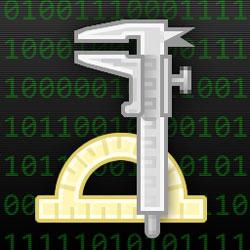Here's a professional caveat regarding solution architects and enterprise architects: They're often the same people. An EA and an SA can fill each others' roles and, in fact, this happens quite a bit.

That said, if you're an EA who's asked to take on a solutions architect's role, there are differences between the types of work you'll do. The good news is the roles share common skill sets, which is why they're grouped under the umbrella "IT Architecture." Confused? Here's a breakdown of who does what.
Enterprise Architects
Enterprise architects are charged with defining cross-domain capabilities and solutions for an organization (or in some cases just documenting them). EA is a big picture role that focuses on how issues, projects and systems relate to one another in ways that aren't immediately obvious to those working within the individual projects. EAs are often also asked to establish, populate and otherwise maintain enterprise architecture/ knowledge repositories. These resources are used as a reference framework for all other IT activities.
Solution Architects
Solution architects are charged with defining, and usually implementing, specific technology solutions. Often referred to as a project architects, the role can just as easily apply to any kind "architect" role, like data architect, SharePoint architect or security architect. The SA is more focused on application development life cycles than the EA, and is often tasked with following a solution throughout the entire project life cycle, whether it lasts for months or years. If these definitions sound a bit open ended, they are. That's primarily because this is how the roles are viewed by most employers. The SA role in particular is hard to pin down, because almost any IT specialty can have some kind of Architect assigned to it. As the SA role becomes more technology-specific, it moves further away from the generic vision of the IT architect as someone who could move back and forth between the roles. If you're not invested in one specific technology, there are a common set of capabilities that EAs and SAs tend to share:
- Problem-solving or analytic reasoning: These ideas are often referred to as "critical thinking," a catch-all description. For our purposes, they reflect the ability to apply one or more problem-solving methodologies in order resolve any type of technical issue .
- System Engineering Skills: Oftentimes people lose sight that architecture is an engineering as a well as design-focused discipline. System engineering helps provide the ability to think through constraints, dependencies and relationships. It also provides valuable insights into how standards are developed and deployed.
- Design Thinking: This is a bit of a buzz term, but it helps emphasize the creative nature of architecture. Analytic and system engineering skills will only take you so far. Creativity brings you the rest of the way.
Any architect who's worked across multiple technologies as an SA or an EA will at some point apply the skills I've listed. The number one talent, though, is the ability to take these common abilities and apply them to an entirely new technology or problem. Image: clipart.com
 That said, if you're an EA who's asked to take on a solutions architect's role, there are differences between the types of work you'll do. The good news is the roles share common skill sets, which is why they're grouped under the umbrella "IT Architecture." Confused? Here's a breakdown of who does what.
That said, if you're an EA who's asked to take on a solutions architect's role, there are differences between the types of work you'll do. The good news is the roles share common skill sets, which is why they're grouped under the umbrella "IT Architecture." Confused? Here's a breakdown of who does what.



